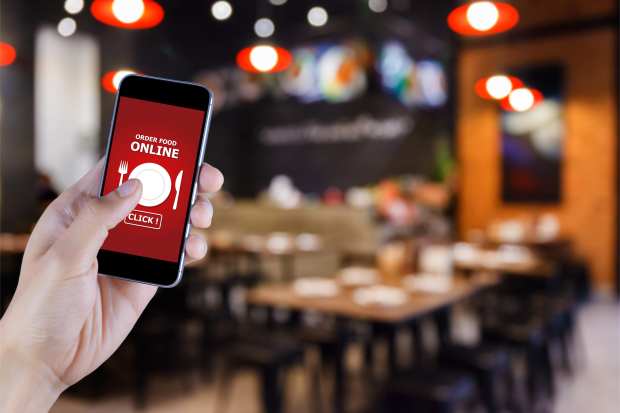How Olive Garden Is Helping Set The Digital QSR Innovation Table

To-go service is getting more important, and online ordering still needs to be made simpler. Those are among the main lessons from the latest report that helps to detail digital and mobile progress in the world of quick-service restaurants (QSRs).
As PYMNTS readers know, the QSR industry is undergoing historic innovation and disruption — and the latest financials from one of the largest and most successful QSR operators show where the trends are headed for late 2019 and the 2020s. We are talking about Darden Restaurants, which owns such QSR favorites as Olive Garden and LongHorn Steakhouse, and which recently reported its financial results for the first quarter of the company’s fiscal 2020.
Sales Trends
Overall, total sales increased 3.5 percent year over year to $2.13 billion, thanks in part to the addition of “40 net new restaurants and a blended same-restaurant sales increase of 0.9 percent,” according to that release. Digital and mobile also contributed to the overall gains, and in some cases served as a bright spot for particular chains under the Darden umbrella.
Take Olive Garden — which, as Darden Restaurants CEO Gene Lee noted in Darden’s recent post-earning conference call, benefited during the quarter from the addition of its “$5 take-home entrées to the Everyday value lineup, which was supported with national advertising to drive awareness. It has been met with strong guest demand, and it will be a catalyst to continue to grow the off-premise business.”
But digital arguably provided an even better story for the brand. “During the quarter, digital sales grew by more than 30 percent and represented approximately 40 percent of to-go sales,” Lee told analysts on that call. “Overall, off-premise sales grew 12 percent, representing 14 percent of total sales.”
Further developing those off-premise sales to meet the needs of increasingly busy consumers is an areas of heavy focus for Darden Restaurants and Olive Garden going into the final months of the calendar year, Lee also said. “A key part of that focus has been optimizing the digital sales channel for both mobile and desktop,” he said.
Stepping back from Darden’s latest financials allows a deeper picture of those digital and mobile trends in the wider world of QSRs — a picture supported by ongoing PYMNTS research into the topic. For instance, the projected share of U.S. smartphone users who will utilize food delivery apps by 2023 is 23 percent. As well, the new PYMNTS Order To Eat Tracker found that the volume of mobile app orders rocketed 130 percent from 2016 to 2018, and the overall mobile order market value is set to reach $38 billion by 2020.
Customer Patience
QSR operators that go down that mobile path — and it’s pretty much impossible for any of those operators to give mobile less than a full focus going into 2020, as Lee’s recent comments indicate — must take into account consumer impatience. That’s because the share of consumers who are unwilling to wait longer than 10 minutes for food ordered via mobile app is 90 percent. Woe to any QSR operation that ignores that lesson.
But it’s not just about speed — it’s about offering a simple QSR experience via digital and mobile channels. That applies to LongHorn Steakhouse, too, according to Lee. “The team also continued to focus on ensuring the to-go experience equals their in-restaurant experience for guests who choose this convenience,” he said of efforts during the recently completed quarter. “The team simplified the online ordering process, which significantly reduced the order time.”
Such efforts appear to be paying off for LongHorn Steakhouse, at least in his view. “During the quarter, digital sales grew almost 50 percent and represented more than one-third of total to-go sales,” he told analysts. “Additionally, they have now completed a dedicated to-go area in more than half of their restaurants. These actions led to continued improvement in guest satisfaction scores for order accuracy and timeliness and helped to drive to-go sales growth nearly 12 percent.”
More details about QSR digital and mobile innovative efforts are coming soon enough. But these recent results do a solid job of highlighting what’s important in the QSR world as the year winds down.